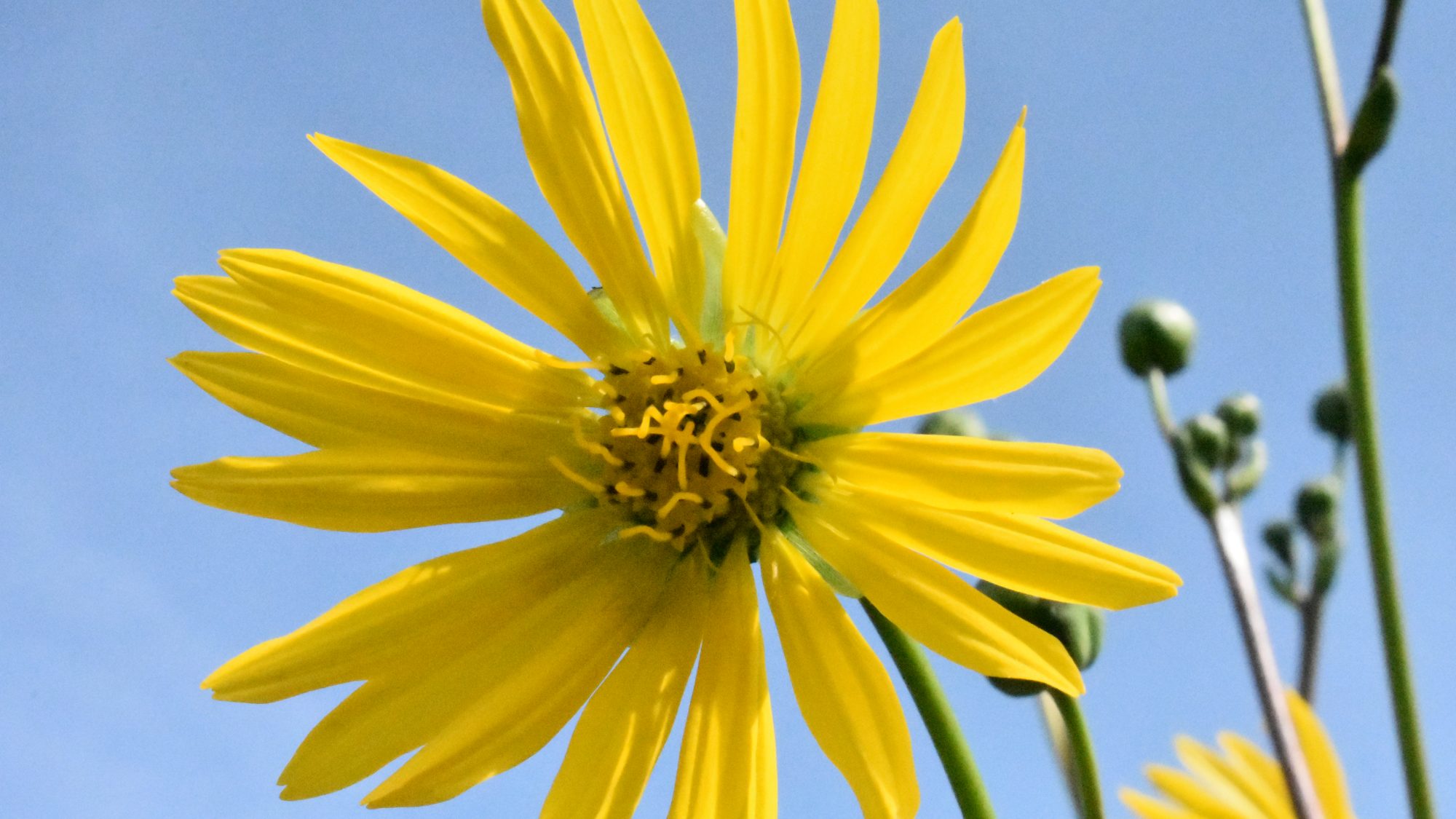This giant of a daisy is putting on a show of blooms in the Dry Meadow.
The cosmopolitan daisy family (Asteraceae) is one of the largest plant families containing over 1700 genera and approximately 25,000 species. Members of the family are annual or herbaceous, and have either alternate or opposite leaves, an inferior ovary, and flowers comprising a central disc surmounted by ray florets. The genus Silphium contains approximately 20 species, and is limited in its natural range to North America. S. terebinthaceum has a basal rosette of large, heart-shaped leaves. The branching flower stems can reach 4m in height and bear typical daisy flowers of a central disc of flowers surrounded by ray florets. This is a prairie species, commonly called prairie dock, which is tolerant of poor soils, and occurs in North America in prairies, glades and fens and also areas of disturbance. The genus takes its name from a resin-bearing plant, silphion, from North Africa that was used by the ancient Greeks as a seasoning, perfume, aphrodisiac and medicine, while terebinthaceum means ‘like turpentine’ in Greek and refers to the aromatic resin produced in the stems.

